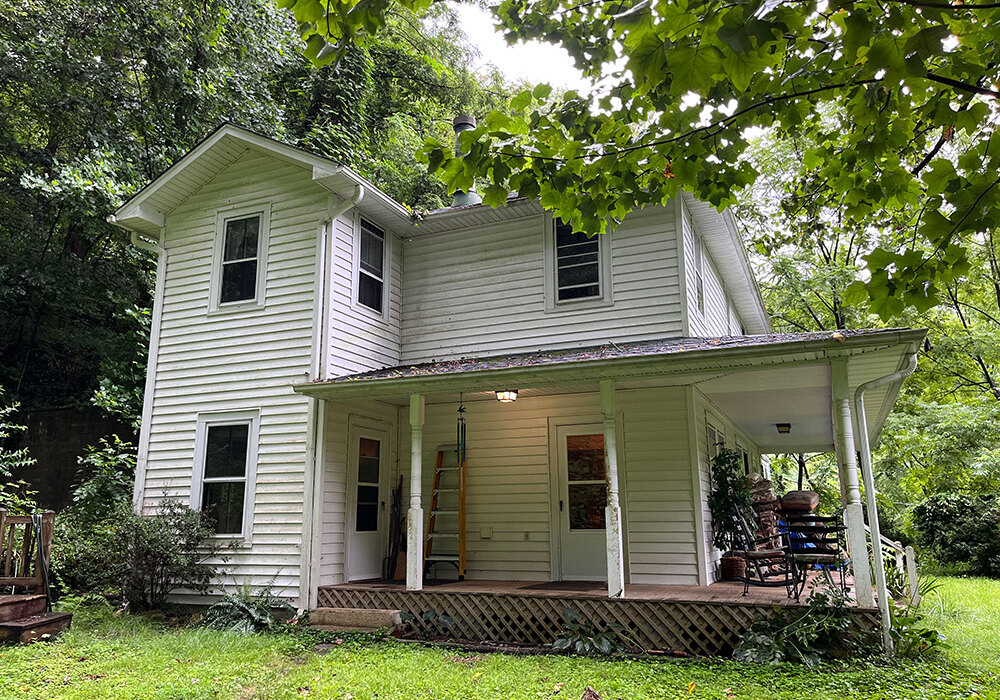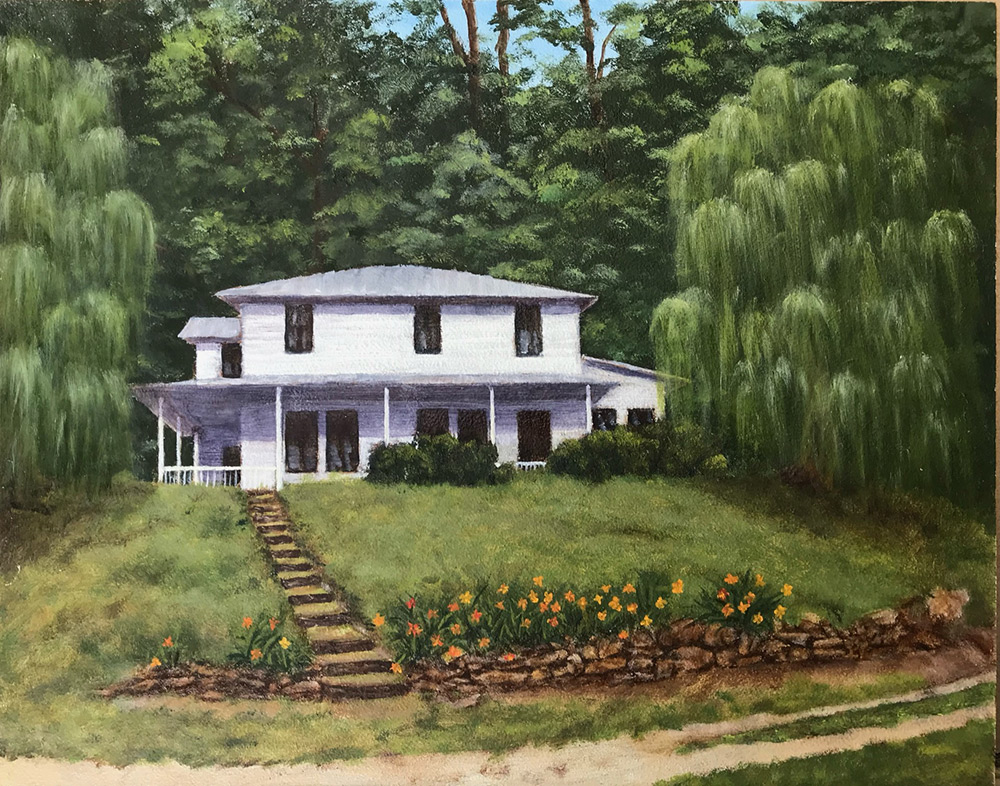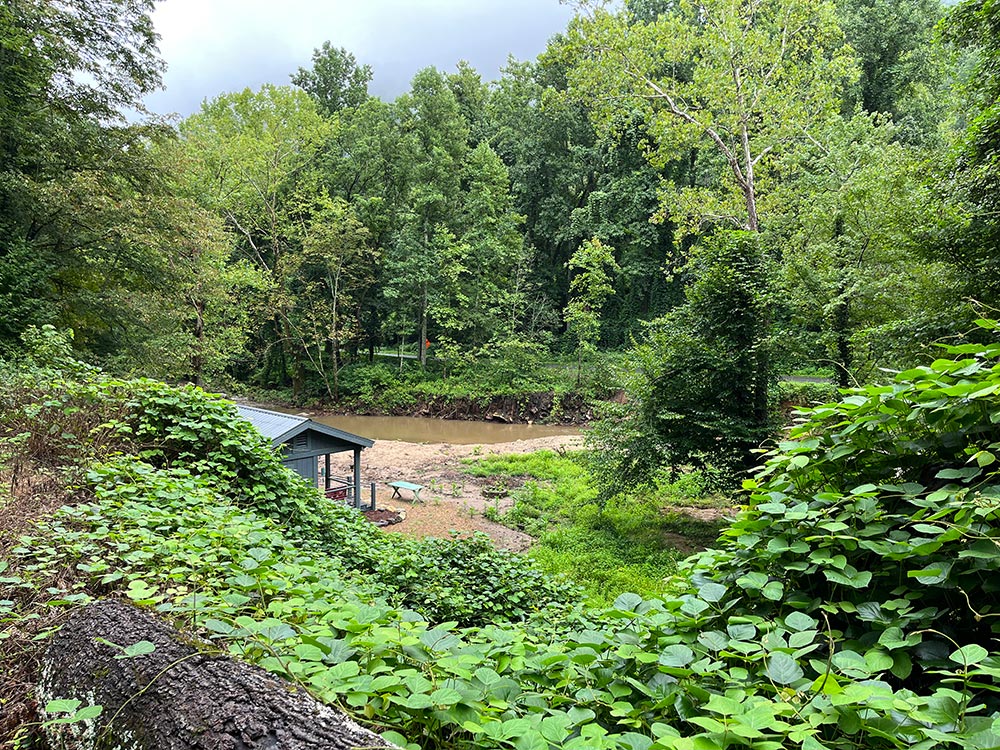
Pearson Family Memories of Life Along the Railway
By Carolyn Baughman
Walking along a boxwood-lined gravel driveway of the Pearson Family land in Saluda, one can sense the history rooted in this place. Just over the hedges, a sprawling meadow beckons you to the Pacolet River, still surging after a rain.
Two great-granddaughters of Captain Charles Pearson are graciously sharing their insights and a tour of the Pearson family land.
Captain Pearson first discovered this land when he surveyed it for what was then known as the Asheville and Spartanburg Railroad. He was tasked with being a “boots-on-the-ground” engineer for the project, and he would later be credited with determining the route for the Saluda Grade.
In reflecting on the goal for the railway running through this corridor, Cousin Caroline notes, “I know it was a big deal to get this line through. It was an economic and tourist-centered effort to develop Western North Carolina as a destination. They saw it as bringing people and commerce. What they had to do to get that line up the mountain was a huge effort.”
From all his time surveying this land along the Pacolet River and its surrounding natural beauty, Captain Pearson also determined the land would be a wonderful place to raise a family. So in 1876, he purchased the land surrounding the river from Mr. Milton Phillips.
Captain Pearson and his wife Susan would go on to have five children.
One of his sons would be named John Ellis Pearson. Following the success of the railroad, Ellis and his wife Margaret opened a “comfort stop” for travelers along the railway. This served as a general store and post office. Caroline reflects, “I’ve been told that my grandmother sold chicken sandwiches and dinner to passengers waiting to go up the grade.”

Painting of the Pearson family home, courtesy of the Pearson family
Later in 1924, Ellis and Margaret built a home on the other side of the river along an area first known as “Mimosa,” now called “Melrose.” Their home was situated on a hill with a view of the railway in the distance. The house became known in the family as the “Big House.”
Ellis and Margaret raised 11 children in this home, and generations of their grandchildren returned summer after summer to create memories at the Big House.
“It was a magical place as a child,” reflects Cousin Lynn, “My cousins were here and we played in the river right in front of my aunt’s house. My mother and her family deeply loved Melrose. It was always a special treat to go on walks with them. They taught us about the native plants and animals. There was always something new to discover. They shared and instilled in us their deep and abiding reverence for Melrose. Life was a treasure hunt. Our only concerns were yellow jackets and snakes.”

The Pearson family land (Photo by Carolyn Baughman)
The white two-story farmhouse is surrounded by beech, hickory, walnut, apple, and pear trees. Lynn recalls, “One of the sycamore trees, we called a ‘signature tree’ because many of us signed our name on it.” She also recalls, “One apple tree had the best apples. When we were too little to climb the tree we would throw rocks to knock down the apples.”
As the passenger and freight trains would pass by, Caroline recalls, “You could feel the vibrations coming.” Lynn adds, “We would barrel out the front door and wave to the passengers going by. Two of our uncles were engineers and they waved to us from the tracks.”
Of the times spent among the family at the Big House, Lynn also reflects, “We sat on the front porch in the cool air and watched the storms come up. Then at night, we’d come out and look at the Milky Way.”
Cousin Caroline adds, “It’s strange when you go there today because the trains were like a living organism, and now there are no trains.”
A generation later, the historic Saluda Grade Railway has an opportunity to become the Saluda Grade Trail, a proposed 31-mile mixed-use corridor connecting Inman, SC to Zirconia, NC.
Caroline continues, “When I learned about the SGT, I was really excited about it. To me, given the work that my great-grandfather did to lay out that line, I think it’s a perfect way to preserve his legacy.”
She envisions further preserving his legacy with something like a historical marker along the trail, saying “I thought it would be really great to have a rest-stop kiosk at Melrose where the station was, [as well as] some interpretive materials to remind people of what went on there.”
She adds, “I think that would inject life into the whole [railway] to have people along the path. It’s a chance to revitalize that area in a good way. And it’s something that everyone can participate in. People of all ages and abilities can take advantage of a paved bike trail.”
The Saluda Grade Railway has an untold number of stories just like the Pearson family’s along its route. This is the first in a series of articles about the local people whose lives are intertwined with the past, present, and possible future of the Saluda Grade Trail.